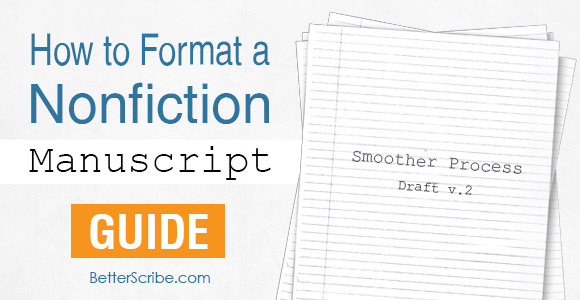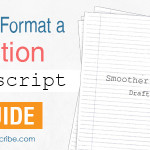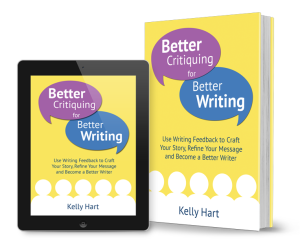 One of the first challenges a writer faces is how to format a manuscript. Below are steps that will take you through how to format a nonfiction manuscript and make it industry standard.
One of the first challenges a writer faces is how to format a manuscript. Below are steps that will take you through how to format a nonfiction manuscript and make it industry standard.
If your intentions are to submit your manuscript to a publisher or an agent, please check their guidelines first as they may vary.
Your title page should include:
- The title of the work should be centred in the middle of the page.
- The name of the author should be below the title of the work.
- Your approximate word count (to the nearest hundred) should be just below the author’s name on the title page.
- Your contact details should be in the same font and size as the manuscript font in the bottom right-hand corner of the title page.
If you have an agent, you should include their details in the top left-hand corner of the title page.
Your manuscript should be formatted as follows:
- Set the margins for your document at 3 cm (1.18 inches) on all four sides.
- Align to the left-hand side only; the right-hand side should remain jagged.
- Use 12-point Times New Roman (Courier and Arial fonts may also be acceptable as they are non-proportional) in black type only.
- Lines are to be double-spaced with no extra spaces between paragraphs.
- Single space between sentences after periods/full stops.
- Indent new paragraphs with the exception of the opening paragraph of a chapter or scene break. (Please do not do this by hitting the tab key. Set your document up in Word through Format>Paragraph>Section – set to 1.25 cm (0.5 inches).)
- Insert a key word from the title in the top right header with the page number and your last name (e.g. Scribe – Formatting – 20).
TIP: If you don’t want your header to appear on your title page you can double click inside the header itself, and this will bring up your header design tool bar. If you tick the Different First Page option, the header on the first page will disappear.
- Begin chapters on new pages. Centre the chapter title, even if it’s only Chapter One (or Chapter 1), about one-third of the way down the page. Skip a couple of lines before beginning the text of the chapter.
- Indicate a break in text (that is not for a new chapter or heading) by inserting a blank line and centring the hash sign (#) on it.
- Use italics for emphasised words. Never underline in nonfiction.
- You can use bold sparingly to highlight important information.
- Headings and subheadings must be larger and formatted differently from your main text (e.g. bold or italics). Headings should also be easily distinguishable from subheadings. An easy way to do this is to set up different styles for headings.
- If you need to use tables in your nonfiction manuscript, you can but do this by using Insert>Table rather than creating a table manually using the Tab key.
- Never use columns as this may alter the layout of the rest of your document.
- Short quotes should be enclosed within single quotation marks (‘ ’) in the body of a paragraph. Double quotation marks (“ ”) should be used within single ones for ‘quotes within quotes’.
- Longer quotes, or ones that you wish to stand out, should be given a separate paragraph with a left tab indent (these are often called ‘block quotes’).
- Centre a hash sign (#) one double-spaced blank line down at the end of the manuscript, or simply write THE END. Alternatively, you can do neither, providing your writing ends near the bottom of the page as this could cause confusion over whether the manuscript is complete or pages are missing.
- Referencing will depend on how you are publishing. Some publishers will allow footnotes, others don’t. If you’re publishing independently you will have to choose what you think is best for your target audience. One thing is certain; you must make sure your references are complete.
IMPORTANT: When submitting a manuscript to a publisher, agent or an editor, it should be one continuous document, not saved with chapters as separate files. In addition, most publishers, agents and editors will only accept Microsoft Word documents or documents that have been converted to Word.
Having followed these steps, you should now have your nonfiction manuscript formatted to industry standard.






Connect With Kelly